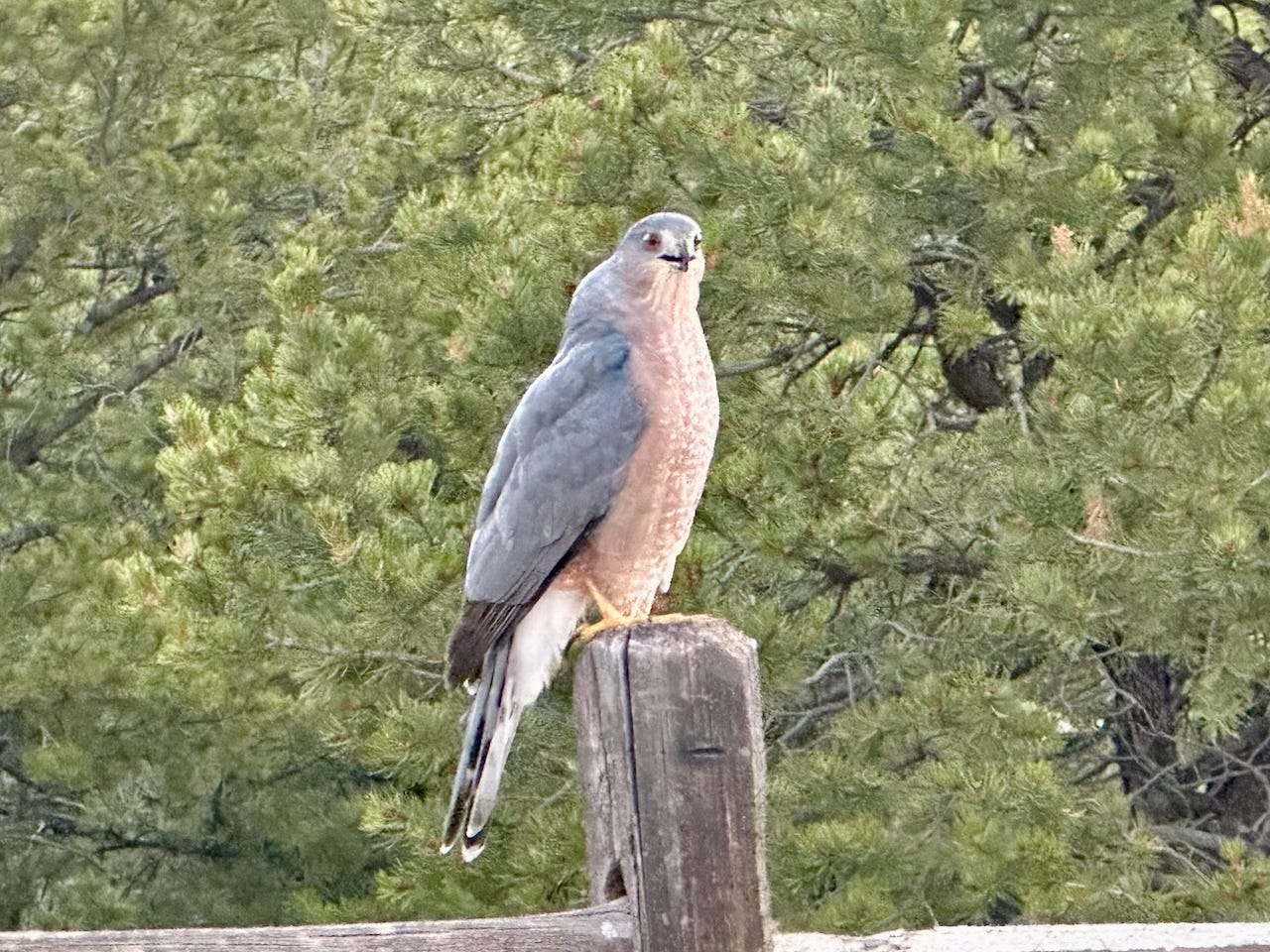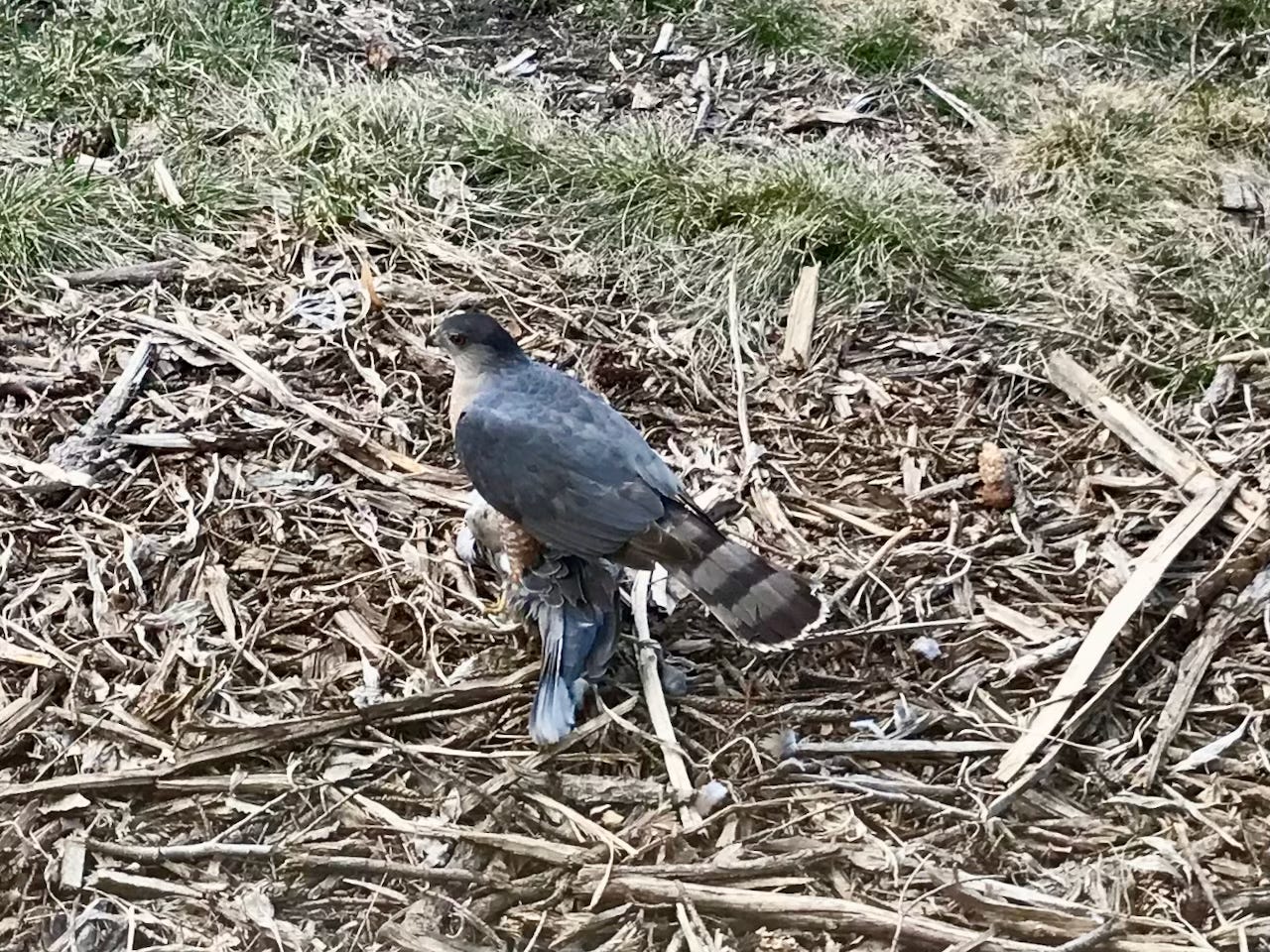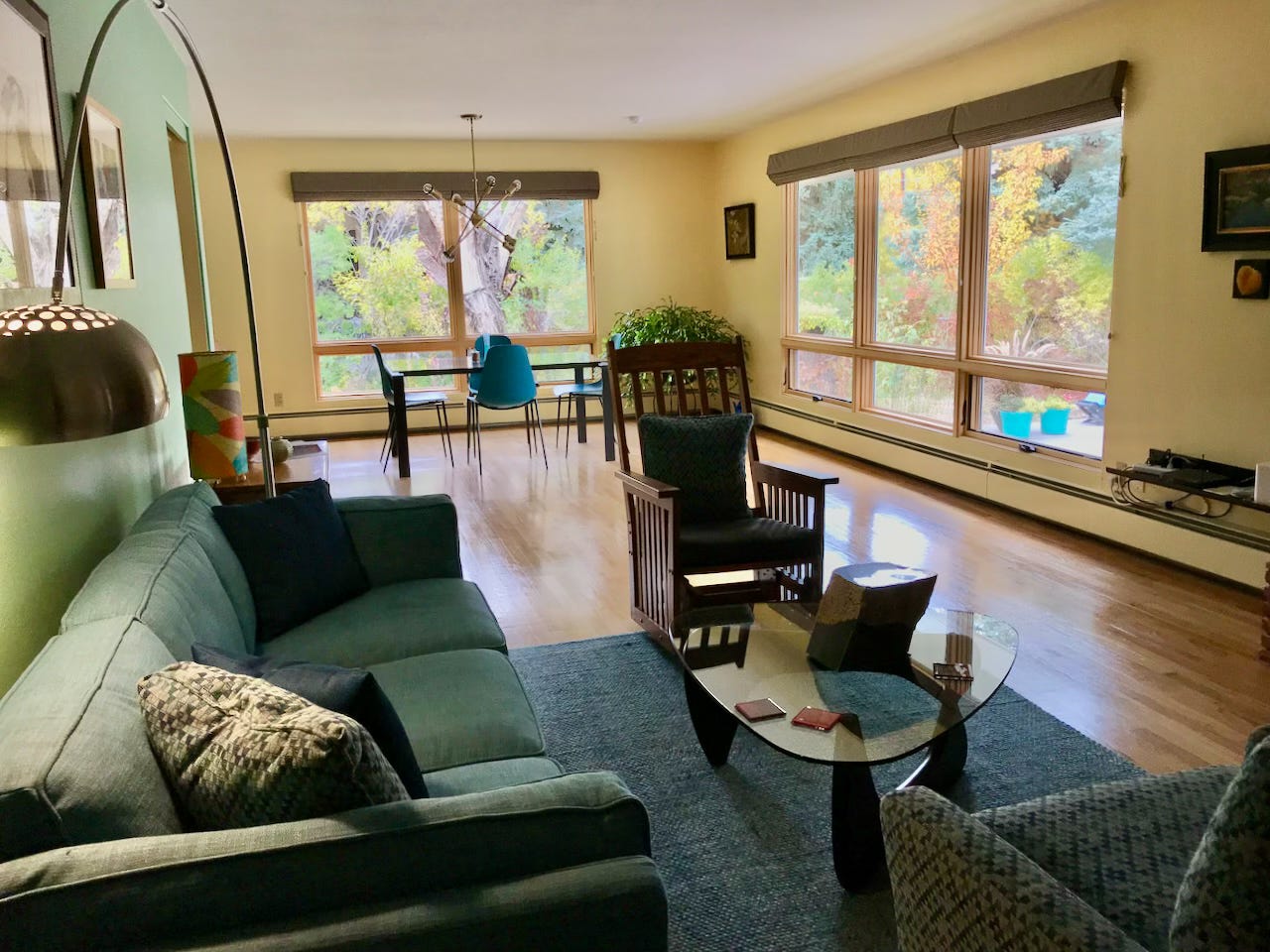bunching muscles
Cooper’s Hawk rises to fly
then settles, chattering
I didn’t see this Cooper’s Hawk in the half-light before dawn until I was a few paces away. The bird pushed upward to fly—that bulge on the back of their neck is flight muscles—but then settled and simply “talked” as I passed. What a gift to be so close!
Cooper’s Hawks (in ornithology, the practice is to capitalize the bird’s common name) are accipiters or bird hawks for their major food. These hawks are like Quarter horses or sports cars, using their short but wide wings for quick acceleration and their long tails to turn on a dime and maneuver between trees and around buildings.
They catch their prey—medium-sized birds from rock doves and robins to starlings—on the wing, breaking the bird’s spine with their clenched feet and knocking their meal out of the air.
“Wait!” You say. “They eat other birds? How cruel!” No crueler than eating any other animal or plant.
We all eat someone as we take part in the cycle of energy on this planet, from sunshine to plant sugars, from plant sugars to animal flesh, from plant cells and animal flesh to being eaten or decayed, and the lives that recycle us back into the atoms that bind together into molecules and new life. In a spiritual sense, you could look at eating—whatever the diet—as part of our contribution to reincarnation: that which is us, that which is any plant or animal, gets recycled into new life, over and over again as we eat.
So when I eat or drink, I try to remember to say thank you to the lives that make up my food and beverages: the oats and blue corn in my morning hot cereal, for instance. The cacao trees whose berries—their babies—were harvested, dried, roasted, ground, and processed to flavor the drink I am sipping as I write this. No matter what I choose to eat, I can’t escape eating other lives. What I can do is be respectful of those lives, appreciate their part and their contributions to this continuing cycle of life and spirit as we all spin with Earth’s travels around the sun.
Seeing the Cooper’s Hawk on my dawn walk reminded me of that practice of saying thanks to my food. And the encounter in the half-light also reminded me of the Cooper’s Hawk I knew at the beautiful but very neglected mid-century house I “re-storied” in Cody.
I met that hawk one April morning when I was sitting at my desk contemplating whether I could get in any writing time before Jeff, my contractor, arrived to start whatever project we were engaged in that day. I hadn’t gotten far in my contemplation when I heard a loud “Crack!” like a rifle shot from the living room.
I raced out of my office and down the hall, afraid that someone had shot out one of the brand-new and expensive replacement living-room picture windows. But when I got to the window, all I saw was a ghostly pattern of dove feathers on the glass. I looked down at the yard, and there was a Cooper’s Hawk, all fierce eyes and yellow feet, a Eurasian Collard-Dove in their claws, tearing out the breast meat.
I didn’t realize just what had happened, but the next day, when I heard that loud “Crack!” again, and raced to the living room, I got it. There was another ghost of a dove-collision on my window pane, and below, the Cooper’s Hawk looking up at me, perched on the breast of another dead Eurasian Collared-Dove.
The Cooper’s Hawk, I realized, had learned how to use my picture windows to hunt: the hawk would chase a Eurasian Collared-Dove across my yard and into the picture window. The dove, not seeing the window, would collide with the glass pane and fall to the ground, neck broken.
The hawk would pull up before hitting the window and drop on the dove to eat a fresh meal. Gruesome perhaps, but honestly, also fascinating. The bird had learned how to use windows to hunt, and the population of invasive Collard-Doves in my neighborhood began to decrease.
(Collared-Doves are a fairly recent avian invader to North America. They arrived in Florida on cargo ships from their native range in Eurasia in the 1960s and 1970s and have spread across the continent since then, displacing our native Mourning Doves.)
Honestly, I couldn’t help but appreciate the Cooper’s Hawk’s contribution to my neighborhood community. Even if that loud “Crack!” of a Collared-Dove hitting my picture windows did give my heart a jolt every time.
(My mid-century modern living room and the replacement picture windows the Cooper’s Hawk used to hunt.)
Want to know more about Cooper’s Hawks (or Eurasian Collared-Doves)? Look them up at Cornell Bird Labs’ All About Birds website or download their free bird ID app, Merlin.







While reading your story at my kitchen table, I looked up to see a neighborhood coyote checking out the Raven's food dish. Since it is way past the Raven's breakfast time, I doubt there was much left to munch. Maybe a bit of dog food. I've been putting out cracked corn for any ground feeders that are interested. The Scaled Quail have been devouring it. Isn't Nature grand?!
Susan, I am enjoying your stories and reminders on gratitude!